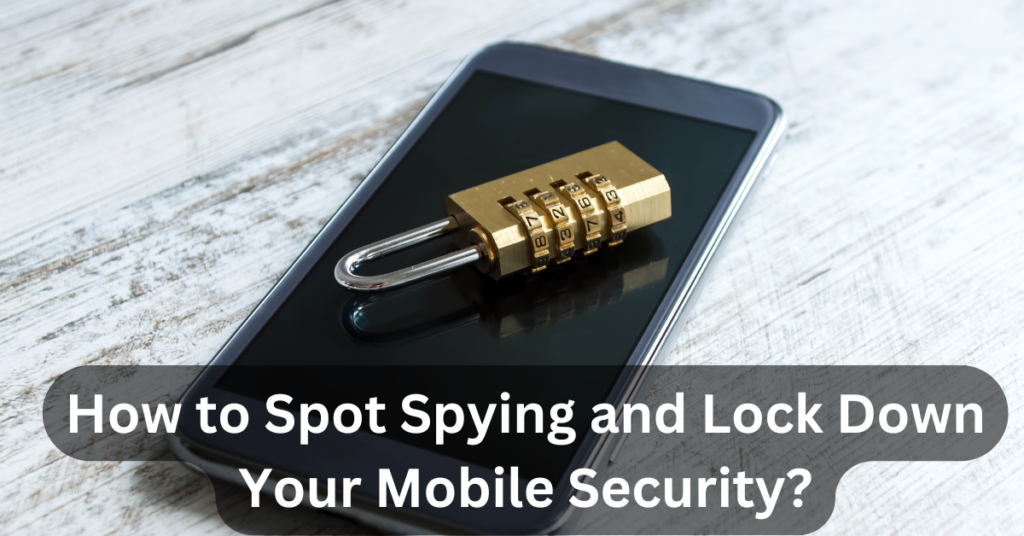Our phones have become personal vaults, storing everything from private conversations to sensitive financial details. But with this convenience comes risk. Phone tapping and spying are real threats that can invade your privacy without your knowledge.
Phone tapping involves secretly listening to your calls or intercepting your communications. While it once required physical access to phone lines, today it often happens digitally through spyware or hacking tools. Spying goes beyond calls, it includes tracking your messages, location, browsing history, and even activating your microphone or camera without your consent.
Signs that your phone might be tapped or spied on include unusual background noises during calls, sudden battery drain, overheating, unexplained data spikes, delayed shutdowns, or strange text messages with odd characters. Noticing any of these means it’s time to act.
This guide will provide practical, easy-to-follow steps to protect your phone and data from tapping, spyware, and other spying threats in 2025. Let’s look in to keeping your digital life safe and private.
How to Know If You Are Being Tapped or Spied On
Worried someone might be listening in or watching what you do on your phone? You’re not alone. Modern spyware and tapping tools are designed to be stealthy, but there are still warning signs you can watch out for. Here’s how to spot if your phone is being tapped or spied on:
Unusual Sounds During Calls
If you hear strange noises like clicking, static, echoes, or even faint voices during your calls, it could be more than just a bad connection. Repeated odd sounds can be a sign that someone is intercepting your conversations or that surveillance equipment is active on your line. Learn more about phone tapping techniques.
Rapid Battery Drain or Overheating
Spyware and tapping software run in the background, often using a lot of power. If your phone’s battery suddenly drains much faster than usual or the device feels hot even when you’re not using it, that’s a red flag.
Increased Data Usage
Have you noticed a spike in your data usage without any change in your habits? Spy apps often send your information, calls, texts, recordings, or even photos, back to a remote server, using up your data in the process. Protect yourself by understanding how to spy on someone online.
Receiving Strange Text Messages
Getting odd texts with random numbers, symbols, or gibberish from unknown numbers? Some spyware uses coded SMS commands to control your phone remotely. These messages shouldn’t be visible, but glitches can make them appear in your inbox.
Unfamiliar or Hidden Apps
If you see apps you don’t remember installing or notice suspicious apps with generic names and excessive permissions, your phone could be compromised. Spyware often tries to hide itself or uses fake system names to avoid detection.
Delayed Shutdowns or Restarts
When your phone takes longer than usual to turn off or restart, it could be because spyware is running in the background and preventing normal shutdown.
Cameras or Microphones Activating Unexpectedly
If you notice your camera or microphone turns on by itself (sometimes indicated by a green or orange dot at the top of your screen), it could mean an app, or a spyware is secretly recording you.
Poor Signal Quality or Sudden Drops
A sudden dip in your phone’s reception or frequent dropped calls can sometimes indicate interference from surveillance tools.
Unusual Network Activity
Keep an eye on your network activity. If your phone is sending or receiving data when you’re not actively using it, especially at odd hours, it could be a sign of spyware at work5.
If you notice one or more of these signs, it doesn’t always mean your phone is tapped, sometimes there are innocent explanations. But if several of these red flags appear together, it’s wise to take an action: scan your phone with a trusted anti-spyware app, review your installed apps and permissions, and consider resetting your device to factory settings for a fresh start2345
How to Protect Yourself from Phone Tapping and Spying
As digital threats grow more advanced, protecting your phone from tapping, spying, and unauthorized surveillance is more urgent than ever. Rather than dwelling on what these threats are, let’s focus on the best ways you can escape them and keep your personal information safe in 2025. Here’s a practical, expert-backed guide to securing your mobile device and data against today’s most sophisticated attacks.
Lock Down Your Device: Strong Passwords and Biometrics
Your phone’s lock screen is the first barrier against unauthorized access. Use a strong password or PIN and enable fingerprint or facial recognition if available. Avoid simple patterns or birthdays. Also, consider activating “Lockdown Mode” on your phone, which disables biometric unlocking and notifications on the lock screen for extra security.
Use Two-Factor Authentication (2FA) Everywhere
Adding 2FA means even if someone steals your password, they can’t get in without a second verification step. Use authenticator apps instead of SMS codes to avoid SIM-swapping hacks. Learn more about phone number hacking.
Regularly Review and Restrict App Permissions
Spyware often hides in apps that ask for more permissions than they need. Go through your app permissions regularly and revoke anything unnecessary, especially access to your microphone, camera, or location.
Keep Your Software and Apps Updated
Updates fix security holes that hackers exploit. Enable automatic updates on your phone and apps to stay protected.
Use a VPN and Antivirus for Double Protection
A VPN encrypts your internet traffic, making it harder for attackers to spy on your online activity. Combine this with a trusted antivirus app that scans for spyware and malware.
Block and Screen Suspicious Calls
Ignore calls from unknown numbers and use built-in call screening features or third-party apps to block spam and scam calls. Never share personal info over the phone unless you’re sure who you’re talking to.
Monitor Accounts and Phone Activity
Keep an eye out for unusual battery drain, data spikes, or strange behavior. Check your phone bill for unknown charges and review account activity for unauthorized logins.
Enable Remote Tracking and Wipe Features
Set up “Find My Device” on Android or “Find My iPhone” on Apple devices. These let you locate, lock, or erase your phone remotely if it’s lost or stolen.
Embrace Advanced Security Features
Look into behavioral biometrics or AI-powered call screening to add extra layers of protection. Privacy-focused phones or custom ROMs can also offer tighter security controls.
Stay Educated and Vigilant
Cyber threats evolve fast. Stay updated on the latest security news, educate your family and friends, and report suspicious activity to your carrier or authorities.
Summary Table: Essential Steps for Mobile Security
| Step | Why It Matters | How To Do It |
| Strong Passwords & Biometrics | Prevents unauthorized access | Set complex PIN/password, enable fingerprint/face lock |
| Two-Factor Authentication (2FA) | Stops attackers even with your password | Use app-based 2FA, avoid SMS codes |
| App Permission Review | Limits spyware and data leaks | Restrict app permissions, uninstall unused apps |
| Software & App Updates | Patches vulnerabilities | Enable auto-updates, remove outdated apps |
| VPN & Antivirus | Encrypts traffic, blocks malware | Use a reputable VPN and antivirus suite |
| Call Blocking & Screening | Stops scam calls and social engineering | Use built-in and third-party call screening tools |
| Monitor Activity | Detects breaches early | Check bills, device behavior, and account logins |
| Remote Tracking & Wipe | Protects data if device is lost/stolen | Enable “Find My Device” and remote wipe features |
| Advanced Security Features | Adds extra layers of protection | Use behavioral biometrics, AI call screening |
| Ongoing Education | Keeps you ahead of new threats | Stay informed, educate others, report scams |
Escaping phone tapping, spyware, and mobile spying in 2025 isn’t about paranoia, it’s about practical, proactive habits. By combining strong passwords, regular updates, permission management, and advanced security tools, you can make your device a fortress against even the most sophisticated attacks. Stay vigilant, stay updated, and take control of your mobile privacy.
References
- Vertu: 10 Smartphone Privacy Tips You Need to Know in 2025
- That Eric Alper: Phone Security in 2025: Protecting Yourself from Call-Based Hacking
- YouTube: 3 Best Phone Security Tips for 2025 – Protect Your Data NOW!
- Digital Trends: Forget fingerprints: Your phone could lock out thieves by learning your ‘touch signature’
- iLounge: How to Secure Your Mobile Device: 8 Tips for 2025


